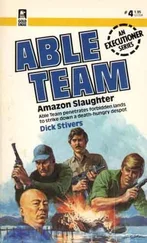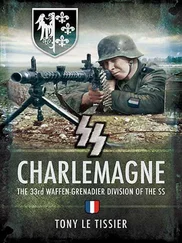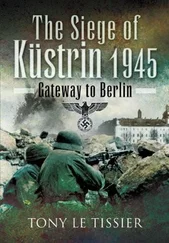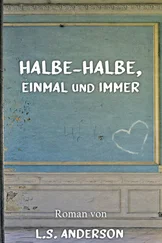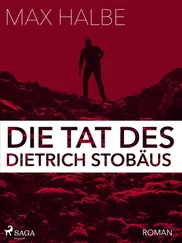We were hardly reacting to the explosions from shells and mortars, but the Stalin-Organs always caused a disruption. Heavy Russian machine-gun fire was raking us from a certain place in the village; it could not fail to hit something. Halbe village had become a place of death and horror. Equipment, vehicles and corpses of all kinds and many nationalities were lying about alongside and on top of each other, reaching as high as the roof gutters of the smaller village cottages. The buildings were almost all burnt out, little better than ruins. There must have been some fearful fighting here during the last few days, and the village must have changed hands several times. [16] Wilke, Am Rande der Strassen , pp. 71–4.
The remaining groups in the central pocket were pressed by four divisions from the south, while all the armoured forces attacked from the north. The 63rd Guards Tank Brigade set off south from the area south of Trebbin–Klein Schulzendorf while 28th Army’s 71st Mechanized Brigade and 61st Guards Rifle Division advanced on the Sperenberg area, thus blocking the Trebbin–Sperenberg road to the German groups with strong forces. These Soviet attacks created a stable defensive front, but they were unable to split up the German groups any further, and 54th Guards Rifle Division failed to block the Wünsdorf–Baruth road (Reichsstrasse 96), its advance being stopped on the Zossen–Baruth road between Zesch and Neuhof. Meanwhile Marshal Zhukov’s troops had continued clearing the woods around Halbe and by 1730 hours could report the complete destruction of the German units found there. [17] Lakowski/Stich, Der Kessel von Halbe 1945 , p. 129.
THIRTEEN
The Last Leg
1 MAY 1945
By midnight the leading elements of 9th Army were in the woods between the Märtensmühle forest warden’s lodge and Berkenbrück. Discussion about when and how the break-out should continue was interrupted by the armour moving off and the rest automatically following.
Relatively weak Soviet resistance in Berkenbrück was rapidly overcome and the road to the west was open. At about 0330 hours the leading elements broke through Hennickendorf, where a barrier was crushed by a Tiger. The fighting here was again described by SS-Lieutenant Bärmann:
We took over the lead at about 0400 hours. The woods were full of the exhausted and wounded. Just before Hennickendorf we had to go over a little hill that was defended by Russian anti-tank guns. A few shells and these anti-tank guns were silenced and the Russians withdrew. We drove on through Hennickendorf, where some houses were burning. After a few hundred metres we came to a barricade at the Pfefferfliess stream. Karl Hörl drove the SPG to the edge of the woods on the left and took up a firing position where we had a good view. On both sides of the stream in front of us lay a swampy meadow, and about 1,500 metres away there was a hill with a few buildings and the Dobbrikow windmill. In between were Russian tanks and anti-tank guns, and some Stalin-Organs to the right of the windmill.
There was a Königstiger near us, still in the lead, and an eight-wheeled armoured car of 10th SS Armoured Reconnaissance Battalion. About fifteen of our men advanced across the meadows, making a start, and a flood of soldiers and civilians streamed out from everywhere, thousands of them, across the Pfefferfliess stream towards Dobbrikow.
The Russians let fly with all their barrels from the windmill hill. Our SPG, Tiger and armoured car returned the fire. Then, as ammunition and stacks of rockets began exploding alongside the windmill, the enemy fire faltered and the Russian tanks started to withdraw. [1] Tieke, Das Ende zwischen Oder und Elbe , p. 338.
Major Otto-Christer von Albedyll, commander of the Armoured Reconnaissance Battalion Kurmark was killed near Hennickendorf when going to the assistance of his wounded adjutant. He was a brave, wise and much loved officer, whose men stopped to bury him by the roadside. [2] He was the heir to the Klessin estate featured in the author’s With Our Backs to Berlin .
The last vehicles of 561st SS Tank-Hunting Battalion ran out of fuel at this point, and Lobmeyer’s men had to go on as infantry. [3] Tieke, Das Ende zwischen Oder und Elbe , p. 338.
Hermann Pätz, a soldier at home on sick leave in Hennickendorf as the result of an eye injury, remembered these events:
The Russians came on Sunday 22 April, at about noon, having occupied Luckenwalde. We had all hidden ourselves, everyone having a bunker in their garden. They even set up a command post in Hennickendorf and many Russian positions were prepared.
The firing started early on 1 May, when German troops chased out the Russians. Three T-34s were shot up, one towards Märtensmühle, one towards Stangenhagen and the third towards Schönhagen. German soldiers were here all day; the leaders went along the road from here to Dobbrikow. At about 0700– 0800 hours a half-tracked APC stopped in front of our house with several others behind it.
In the first was General Busse. Busse’s APC was fitted with aerials and large batteries, and manned by six or seven men. I remember Busse as an imposing person wearing the Knight’s Cross. They got out and spread out a map. I offered them some milk, which they drank. I plucked up my courage and asked the general: ‘Where do you want to go to?’ He replied, pointing to the map: ‘Here near Rieben is a large wooded area; we will stop there and break through at night.’ And: ‘We must find out how strongly Dobbrikow is occupied.’ To one of his officers: ‘Find an NCO and a few men for this!’
He had hardly finished speaking when the Soviets fired from the direction of the village. Busse and his people quickly jumped back into the APC and raced off towards the woods that began about a kilometre away from us. Then came several wounded Germans and shortly afterwards the Russians. These were the last of the 9th Army. For days afterwards the Russians were pulling German soldiers out of the woods. [4] Schulze, Der Kessel Halbe–Baruth–Radeland , pp. 74–6.
SS-Sergeant-Major Streng also described his experiences here:
Our tanks rolled along the Hennickendorf–Dobbrikow road. Half-way along we came under artillery fire from a copse on the right. Anti-tank guns? We couldn’t tell for certain. Suddenly a heavy blow struck our Tiger and the track mudguards fell to the road with a clatter.
Our gun roared at the copse some 330 to 400 metres away. There were some bright, explosive flashes and branches and treetops whirled into the air.
Like lightning came a second direct hit on the hull of our tank. A shell hit the right side of the hull with enormous force and shot upwards. Then followed another frightful bang. We clenched our fists and gritted our teeth. ‘Hit on right side of turret! Driver, hard left! Quick, go, go!’ I screamed on the intercom. Our tank reared itself up and rolled left into a field sloping down to a small lake. After going several hundred metres, we turned back to the right. Meanwhile the other tanks had overcome the Russian anti-tank guns and the march of thousands continued.
Our fuel ran out. Somehow we got hold of some petrol and drove on. As we were climbing aboard, our tank received a direct hit from half left across the lake from a Russian tank standing there that we had not seen. I was wounded in the left upper arm and left thigh. They laid me down inside the tank, which Läbe took over. The Wenck Army was only a few kilometres away, but here at Wittbrietzen–Rieben–Zauchwitz the Russian cordon seemed impenetrable.
The whole column, including the remains of the 2nd Battalion, Panzergrenadier Regiment Kurmark , moved via Dobbrikow on to Rieben. Russian bombers and ground-attack aircraft kept attacking, each time leaving more dead and wounded.
Читать дальше

